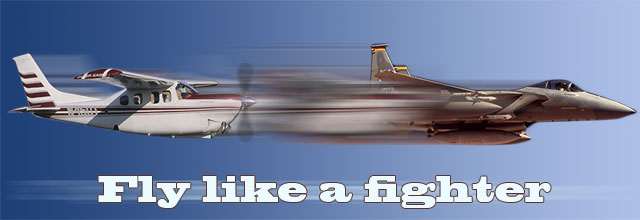 I was instructing in the back seat of a T-38A with an international student up front. On our descent to Randolph Air Force Base in San Antonio, Texas, we were in almost solid clouds from about 18,000 feet to our position on radar base leg. With a reported ceiling of 800 feet, we were still in and out of the clouds, and with a few breaks I was trying to identify some ground references below us. That is when I wasn’t sure if I saw something out of the corner of my eye or not, namely the flight director steering bars coming into view along with a master caution light—only for a half second.
I was instructing in the back seat of a T-38A with an international student up front. On our descent to Randolph Air Force Base in San Antonio, Texas, we were in almost solid clouds from about 18,000 feet to our position on radar base leg. With a reported ceiling of 800 feet, we were still in and out of the clouds, and with a few breaks I was trying to identify some ground references below us. That is when I wasn’t sure if I saw something out of the corner of my eye or not, namely the flight director steering bars coming into view along with a master caution light—only for a half second.
My student saw the steering bars, master caution, and an OFF flag in the right EGT gauge. Uh oh. That could mean an impending right generator/bus failure without crossover for the left generator to pick up the load. Of course, all of the important items were on the right bus—ILS/NAV, main attitude indicator, HSI, flaps, trim, and gear. I declared an emergency.

There are two basic options for this emergency. If the right generator is still working, you can slow down, re-trim, and get the flaps down. The downside is your fuel burn goes up and your range goes down. The second option is to fly somewhere for a no-flap landing, knowing the landing distance will double and you may likely go off the end of the runway. In both cases, the gear will go down by alternate extension but then won’t come up. This gets even more complicated when flying IFR. Iteration A is to join on someone and fly on their wing. Iteration B is to get no-gyro vectors to a no-gyro ASR approach.
What complicated the issue more was that I wasn’t exactly sure what we saw. Planning for the worst case, I weighed my options: Get under the weather on the IFR approach and land at Randolph with the webbed barrier; join on someone’s wing; divert to our alternate (125 miles away); or hope for a no-gyro ASR approach from San Antonio Approach to either San Antonio International (8,500 foot runway) or Lackland/Kelly Air Force Base (11,550 foot runway).
I decided to continue with the approach and stay in the local area where I was more familiar with the surroundings, and also decided to delay gear extension until we were under the weather and committed to a landing. After intercepting final approach and getting a few quick glimpses of some VFR ground reference points, the light show in the cockpit flashed again, this time for about 2 seconds. With a new burst of adrenaline (fear) flooding my body, I knew we didn’t have much longer to go to get under the weather. We did get under the weather and landed uneventfully with all systems operating.
This emergency was tricky because the condition was intermittent and didn’t give us much time to analyze what we saw. It reiterated that not every emergency will present itself as described in the flight manual. Maintenance later found that the crossover relay panel was shorting itself out and was ready to die at any moment. Our timing was lucky. But if luck had run out, I feel like I knew my systems well enough to handle the emergency and land safely. Do you know your systems well enough to be able to consider all options in the event of a problem?
Larry Brown of Colorado Springs, Colo., is a retired Air Force F-15 pilot who is using the lessons he learned as a fighter pilot as a GA pilot in his Cessna P210. Brown, who has 2,700 hours total time during his 33 years of flying, also was an instructor pilot and flight examiner in the Air Force T-38 and instructor pilot in the T-52, the military’s version of GA’s Diamond DA40. See previous installments of “Fly like a fighter.”



